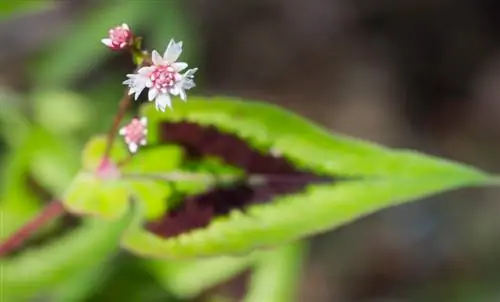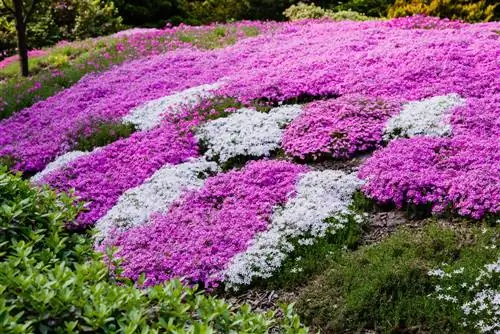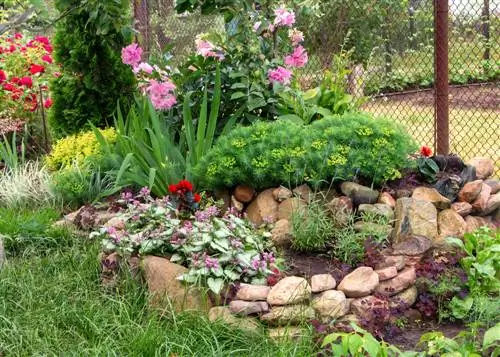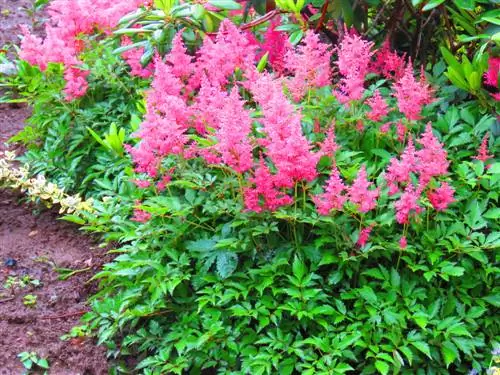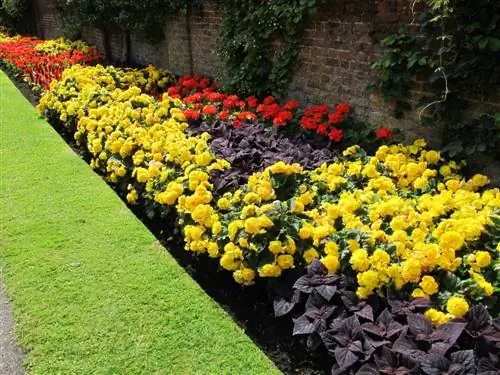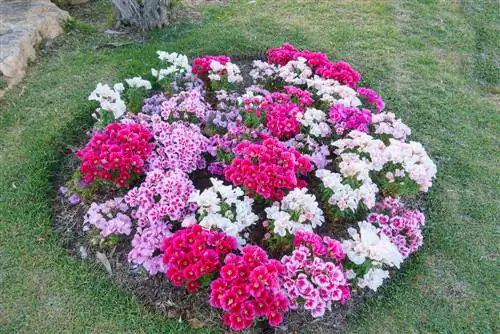- Author admin [email protected].
- Public 2023-12-16 16:46.
- Last modified 2025-01-23 11:20.
The thread-knotweed (Polygonum filiforme or Persicaria filiformis) is an ornamental foliage perennial with broadly lanceolate leaves, which in some varieties have a very striking pattern. Red, delicate and thread-like flower spikes appear in September and October. The plant grows up to 80 centimeters high and is also very suitable for pot cultivation.
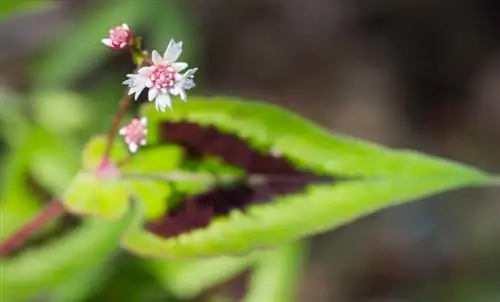
What characterizes knotweed as a perennial?
The thread-knotweed is an easy-care perennial that thrives in partial shade to shade and in moist, humus-rich soil. It grows up to 80 cm high, produces red flower spikes in autumn and is suitable for shade beds and pot cultivation. Popular varieties include “Lance Corporal” and “Painter’s Palette”.
Location and use
The threadweed fits very well in shaded beds and adds an interesting touch to dark garden corners. The plant thrives very well in moist, humus-rich soil in partial shade to shade. A spot with morning or evening sun is ideal; in the midday sun the knotweed lets its leaves hang. The soil should also be slightly acidic to neutral and as low in lime as possible. You should plant between six to nine plants per square meter. In contrast to other knotweeds, threadweed does not tend to grow.
Popular varieties
“Lance Corporal” has a reddish-brown, V-shaped pattern on the leaves, “Painter’s Palette” has very interesting red-white-yellow spotted leaves.
Care and propagation
Narrow knotweed, native to North and Central America, is very easy to care for and is also considered frost-hardy, although light winter protection is necessary. Propagation takes place via herbaceous cuttings in early summer. The species also self-sows. In addition, large specimens can also be propagated by division. Both when planting and every year at the beginning of the growing season in spring, you should thoroughly work organic fertilizer (€56.00 on Amazon), such as horn shavings or compost, into the soil. The perennial has a very high water requirement, which is why you should definitely avoid the soil drying out. In midsummer or during longer dry periods, regular watering is therefore essential.
Tip
Other interesting knotweed perennials include, in addition to the thread knotweed, the candleweed (Persicaria amplexicaulis), the dock knotweed (Persicaria lapathifolia) and the colored leaf knotweed (Persicaria microcephala). The edible meadow knotweed (Bistorta officinalis) can also be cultivated as a perennial in the garden.

